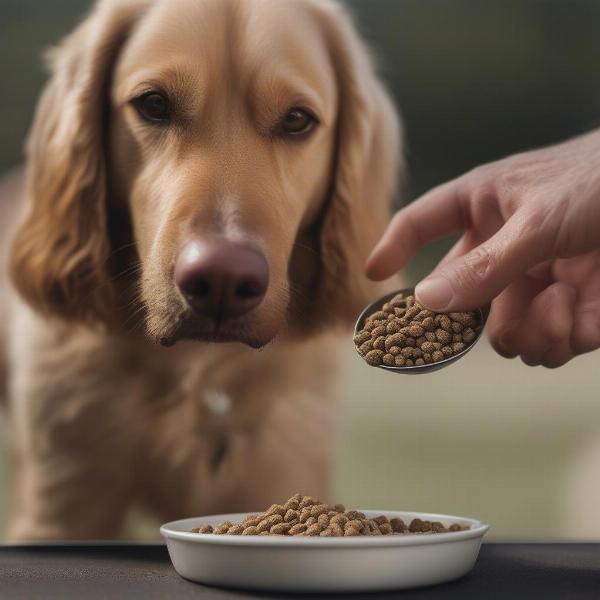Taste of the Wild is a popular dog food brand often touted for its grain-free formula and use of novel proteins. However, in recent years, concerns have been raised about potential links between the brand and certain health issues in dogs. This article explores those concerns, examines the available evidence, and provides information to help dog owners make informed decisions about their pet’s nutrition.
Deciphering the Concerns Around Taste of the Wild
One of the primary concerns surrounding Taste of the Wild arose from a potential link to Dilated Cardiomyopathy (DCM), a serious heart condition. The U.S. Food and Drug Administration (FDA) launched an investigation in 2018 after observing a reported increase in DCM cases, particularly in breeds not typically predisposed to the condition. Some of these cases involved dogs eating grain-free diets, including Taste of the Wild. While the FDA investigation hasn’t definitively concluded a causal link, the correlation has raised concerns among pet owners. Other concerns include reports of digestive issues and inconsistencies in product quality. It’s important to note that these reports are anecdotal and haven’t been scientifically validated on a large scale.
Understanding the FDA Investigation and DCM
The FDA’s investigation into DCM and grain-free diets is ongoing. Their initial findings suggested a potential association, particularly with diets high in peas, lentils, other legumes, or potatoes in various forms. These ingredients are often used in grain-free dog foods like Taste of the Wild as primary carbohydrate sources. The exact mechanism behind this potential link isn’t fully understood, but one theory involves taurine deficiency, an essential amino acid for heart health. However, it’s crucial to remember that correlation doesn’t equal causation. More research is needed to definitively establish whether grain-free diets, including Taste of the Wild, directly cause DCM.
Evaluating Taste of the Wild’s Ingredients
Taste of the Wild promotes its use of novel proteins like bison, venison, and salmon, often marketed as being closer to a dog’s ancestral diet. While these proteins can be beneficial for some dogs with allergies, the overall nutritional balance of the food is more critical. Scrutinizing the ingredient list and guaranteed analysis is crucial. Look for specified meat sources as the primary ingredients, avoiding vague terms like “meat meal.” Also, consider the source and quality of the carbohydrates used. While some dogs thrive on grain-free diets, others may benefit from whole grains.
 Dog Eating Taste of the Wild
Dog Eating Taste of the Wild
What Should Concerned Dog Owners Do?
If you’re feeding your dog Taste of the Wild and are concerned about the potential risks, consult your veterinarian. They can assess your dog’s overall health, recommend appropriate diagnostic tests if needed, and help you determine the best dietary approach for your individual pet. Consider transitioning your dog to another high-quality dog food, either with or without grains, based on your veterinarian’s advice. Monitor your dog closely for any changes in appetite, energy levels, or other signs of potential health problems.
Focusing on a Balanced Diet for Your Dog
Regardless of the brand you choose, providing a balanced and complete diet is paramount for your dog’s health. A balanced diet should include appropriate levels of protein, fat, carbohydrates, vitamins, and minerals. Always choose dog food from reputable manufacturers who follow AAFCO (Association of American Feed Control Officials) guidelines. Regular veterinary check-ups are essential for monitoring your dog’s overall health and addressing any nutritional concerns.
Conclusion
While Taste of the Wild remains a popular choice, the concerns surrounding its potential link to DCM and other health issues warrant careful consideration. Consulting your veterinarian is essential for making informed decisions about your dog’s nutrition. By staying informed and prioritizing a balanced diet, you can help ensure your furry friend’s long-term health and well-being.
FAQ
- Is Taste of the Wild definitely linked to DCM? No, the FDA’s investigation hasn’t established a definitive causal link, but a correlation has been observed.
- Should I immediately stop feeding my dog Taste of the Wild? Consult your veterinarian before making any dietary changes.
- Are all grain-free dog foods bad? No, but it’s important to choose high-quality options and monitor your dog’s health.
- What are the signs of DCM in dogs? Signs can include lethargy, coughing, difficulty breathing, and decreased appetite.
- What should I look for in a good dog food? Look for specified meat sources as primary ingredients and AAFCO compliance.
- Are there alternative protein sources to consider? Yes, options like lamb, turkey, and duck can be good choices.
- How can I find a veterinarian specializing in canine nutrition? Ask your regular vet for a referral or search online for board-certified veterinary nutritionists.
ILM Dog is a leading international website dedicated to providing expert advice on dog care and wellbeing. We offer comprehensive resources on dog breeds, health, training, nutrition, grooming, and much more. From puppy care to senior dog care, we cover all aspects of responsible dog ownership. For expert advice tailored to your dog’s unique needs, contact our team at [email protected] or call us at +44 20-3965-8624. Visit ILM Dog for more valuable information on dog health and care.